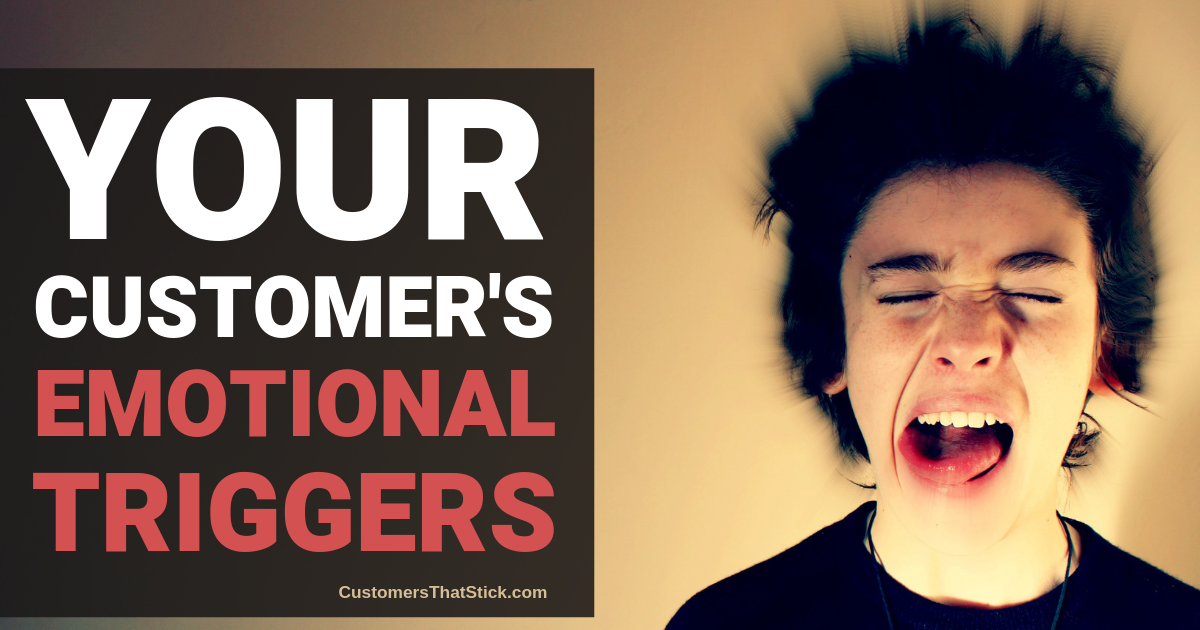
Back in 2015 , we created The 7 Service Triggers, a framework for understanding common triggers or hot buttons that elicit a negative emotional reaction in customers. The 7 Service Triggers explored the idea that patterns are evident in the things that set customers off and that these patterns hold true across a wide variety of customers and interactions.
Even within the 7 service triggers, certain triggers are more relevant to certain individuals than others. For example, a customer might be bothered more by being hassled than being ignored.
Triggers, by their very nature, are highly individualized.
Of course, the 7 Service Triggers do not begin to encapsulate the wide variety of different emotional triggers that customers have. Our emotions are much of what makes us who we are, and our emotional reactions are as diverse as we are.
Each customer has personal emotional triggers that are highly specific to them. They may be formed in childhood or later in life. These triggers may or may not be deeply-rooted in the person’s makeup. For example, someone’s emotional triggers may be informed by a broader influence, such as culture or life stage.
In this post, we are going to explore two common sources of emotional triggers and how we can use that knowledge to create better experiences and more successful service interactions.
(NOTE: For semantic convenience, we are going to use the term “emotional triggers” to refer to the individualized reaction points that are outside of The 7 Service Triggers. However, it should be clear that the 7 Service Triggers ARE emotional triggers and, as noted above, are also highly individualized.)
Different life phases and lifestyles impact what’s important to us. Are your priorities the same as when you were a teenager or in your Twenties? Have the things that bother you changed? Of course, because where we are in life impacts what is important to us and what we are less tolerant of.
An example I like to use in my customer service workshops is as follows: Take someone who is single and in his Twenties. Perhaps he is in his first job, has a roommate, and is always tight on cash. He might be set off by something like not getting a small refund or being able to use a coupon that expired.
In contrast, a successful business owner in her Forties with three kids, who travels out-of-town weekly, will likely care much less about small dollar issues and much more about having her time wasted.
For the first person money matters most, and for the second person time matters most.
Mix up the examples — a single dad in his Forties with three kids who is working two jobs to make ends meet — and you could end up with a customer for which both small dollar amounts and even brief impacts on his time are triggers.
Of course, we’re generalizing here, but you can see how lifestyle can impact what’s important to a customer and what might become an emotional trigger for a customer.
Some emotional triggers are incredibly personal; they run deep and are based on past experiences, whether they be from childhood, previous relationships, or professional history.
For example, depending on how someone was raised, they might see eye contact as aggressive; whereas another person might see a lack of eye contact as disrespectful.
Likewise, certain words or phrases can be triggers for people. Someone might be triggered by a rep’s failure to say “please” when requesting something, another by being told that something is their responsibility.
The important thing to remember is that everyone has a different background, and most people have developed hot buttons as a result. These triggers vary in character and intensity, and for those of us working with customers, they can be very challenging to identify before it is too late.
The question we all must ask in customer service is what can we do to discover and prevent these triggers, short of accidentally pulling them and dealing with the consequences?
Below is an approach for identifying and avoiding customers’ emotional triggers.
Identifying a customer’s personal triggers and avoiding them can be challenging, but like all aspects of prevention, it is effort well spent.
With proper awareness, documentation, and training, you can prevent more of your customer’s emotional triggers from being set off, thereby preventing negative emotions and paving the way for a more positive emotional experience.
Comments are closed.
© 2011-2025 CTS Service Solutions, LLC.
All rights reserved.
Legal Information | Privacy Policy
How to Cite this Site
Pingback: 371: Louis Carter, Emotional Connectedness
Awesome article, Adam! An extremely unique and intuitive way to look at things. I really enjoyed this!
Thank you Jessica! Glad you enjoyed it.